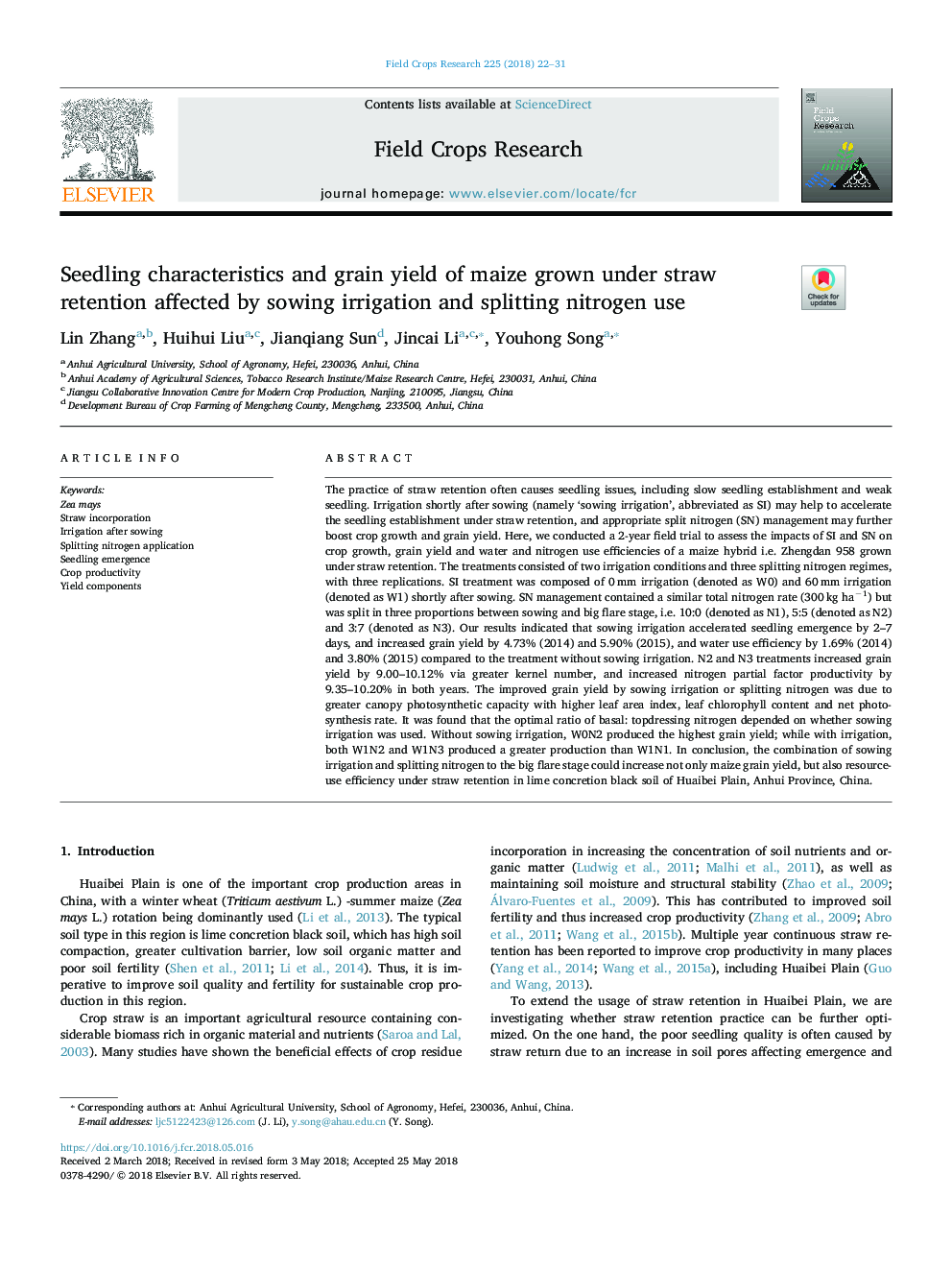| کد مقاله | کد نشریه | سال انتشار | مقاله انگلیسی | نسخه تمام متن |
|---|---|---|---|---|
| 8879079 | 1624638 | 2018 | 10 صفحه PDF | دانلود رایگان |
عنوان انگلیسی مقاله ISI
Seedling characteristics and grain yield of maize grown under straw retention affected by sowing irrigation and splitting nitrogen use
ترجمه فارسی عنوان
خصوصیات نهال و عملکرد دانه ذرت که تحت شرایط نگهداری نی تحت تأثیر آبیاری کاشت و استفاده از نیتروژن تقسیم می
دانلود مقاله + سفارش ترجمه
دانلود مقاله ISI انگلیسی
رایگان برای ایرانیان
کلمات کلیدی
موضوعات مرتبط
علوم زیستی و بیوفناوری
علوم کشاورزی و بیولوژیک
علوم زراعت و اصلاح نباتات
چکیده انگلیسی
The practice of straw retention often causes seedling issues, including slow seedling establishment and weak seedling. Irrigation shortly after sowing (namely 'sowing irrigation', abbreviated as SI) may help to accelerate the seedling establishment under straw retention, and appropriate split nitrogen (SN) management may further boost crop growth and grain yield. Here, we conducted a 2-year field trial to assess the impacts of SI and SN on crop growth, grain yield and water and nitrogen use efficiencies of a maize hybrid i.e. Zhengdan 958 grown under straw retention. The treatments consisted of two irrigation conditions and three splitting nitrogen regimes, with three replications. SI treatment was composed of 0â¯mm irrigation (denoted as W0) and 60â¯mm irrigation (denoted as W1) shortly after sowing. SN management contained a similar total nitrogen rate (300â¯kg haâ1) but was split in three proportions between sowing and big flare stage, i.e. 10:0 (denoted as N1), 5:5 (denoted as N2) and 3:7 (denoted as N3). Our results indicated that sowing irrigation accelerated seedling emergence by 2-7 days, and increased grain yield by 4.73% (2014) and 5.90% (2015), and water use efficiency by 1.69% (2014) and 3.80% (2015) compared to the treatment without sowing irrigation. N2 and N3 treatments increased grain yield by 9.00-10.12% via greater kernel number, and increased nitrogen partial factor productivity by 9.35-10.20% in both years. The improved grain yield by sowing irrigation or splitting nitrogen was due to greater canopy photosynthetic capacity with higher leaf area index, leaf chlorophyll content and net photosynthesis rate. It was found that the optimal ratio of basal: topdressing nitrogen depended on whether sowing irrigation was used. Without sowing irrigation, W0N2 produced the highest grain yield; while with irrigation, both W1N2 and W1N3 produced a greater production than W1N1. In conclusion, the combination of sowing irrigation and splitting nitrogen to the big flare stage could increase not only maize grain yield, but also resource-use efficiency under straw retention in lime concretion black soil of Huaibei Plain, Anhui Province, China.
ناشر
Database: Elsevier - ScienceDirect (ساینس دایرکت)
Journal: Field Crops Research - Volume 225, 1 August 2018, Pages 22-31
Journal: Field Crops Research - Volume 225, 1 August 2018, Pages 22-31
نویسندگان
Lin Zhang, Huihui Liu, Jianqiang Sun, Jincai Li, Youhong Song,
